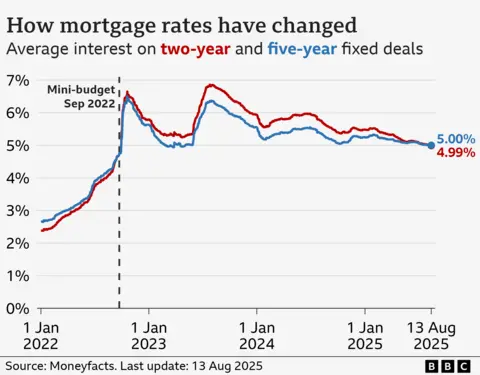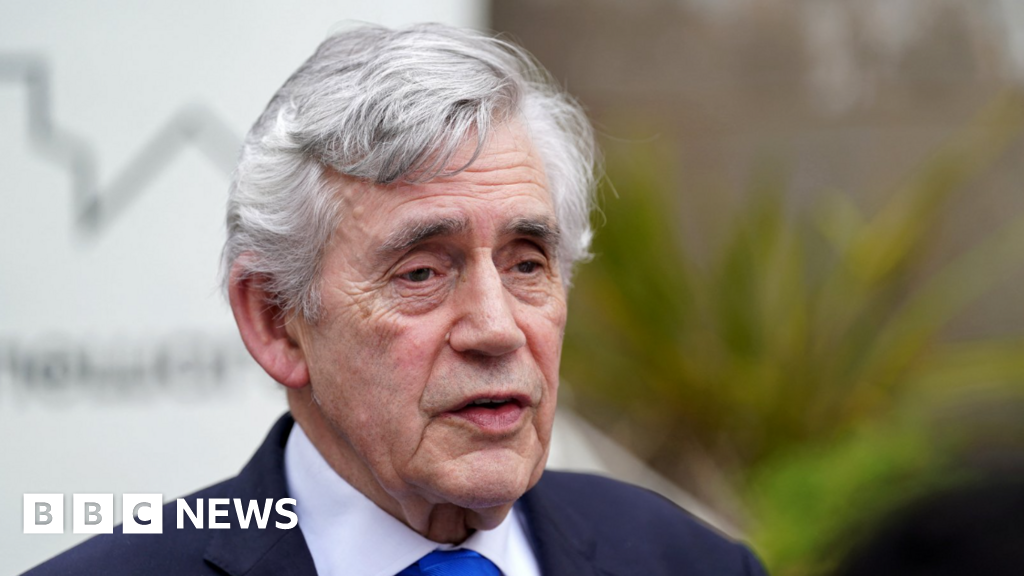BBC business reporter
 Getty Images
Getty ImagesThe average two-year mortgage rate has dipped below 5% for the first time since former Prime Minister Liz Truss’s mini-budget in September 2022, figures show.
The rate has dropped to 4.99%, according to Moneyfacts, which described it as a “symbolic turning point” for homebuyers and shows lenders are “competing more aggressively”.
Interest rates have been cut five times since last August but at the Bank of England’s last meeting, a split vote between policymakers raised questions about whether there would be another reduction this year.
A Moneyfacts spokesperson said that although mortgages are following the “mood music” set by the Bank’s rate cuts, they are unlikely to fall substantially.
Hundreds of thousands of borrowers are due to re-mortgage this year.
UK Finance, the banking industry group said 900,000 fixed rate deals are due to expire in the second half of 2025, while the total for the year is 1.6 million.
Mortgage rates are still “well above the rock-bottom rates of the years immediately preceding” the mini-budget, according to Moneyfacts.
Unveiled by Truss’s short-lived chancellor Kwasi Kwarteng, the so-called mini-budget set out £45bn in unfunded tax cuts, causing UK market turmoil.
It pushed up the cost of UK government borrowing, which fed through into mortgage rates. By July 2023, the borrowing cost of mortgages had soared to the highest level since the 2008 financial crisis.
Interest rates were already rising as central banks around the world, including the Bank of England, tried to deal with inflation which was being made worse by energy price shocks after Russia’s full-scale invasion of Ukraine.

Last week, the Bank of England revealed that inflation is forecast to spike higher than expected this year – at 4% in September – before falling back to its 2% in 2027.
Moneyfacts said this “is likely to mean the base rate will hold around its current level for longer” which, after the last cut, is 4%.
Average house prices ticked up by more than £1,000 in July to £298,237, mortgage lender Halifax said last week.
Although this is close to a record high, Halifax’s head of mortgages, Amanda Bryden, said: “With mortgage rates continuing to ease and wages still rising, the picture on affordability is gradually improving.”
She added: “Combined with the more flexible affordability assessments now in place, the result is a housing market that continues to show resilience, with activity levels holding up well.
“We expect house prices to follow a steady path of modest gains through the rest of the year.”




